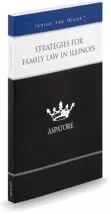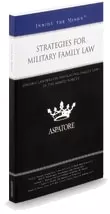Family therapists have long recognized the unrealistic idea the term “blended family” puts forward and the term has mostly fallen out of favor. It conjures up the vision of unrelated children seamlessly coming together into a family headed by two parents, one of whom is often largely unknown to the children.
The reality is that life in a blended family is not always rosy. Demographers have found that individuals who remarry have a 60 percent chance of another divorce. The figure could be as high as 70 percent if either or both of the new spouses have children from earlier relationships.
Perhaps because of the challenges such families face, now more than ever parents are coming up with unique living and child custody arrangements tailored to the specific needs of their families.
Partial Blenders
Partial blenders are parents who have established new serious relationships, but are electing to continue to maintain two somewhat separate households with their respective children from prior relationships.
For example, one family in New York has a very unique living arrangement. Although they have been in a relationship for over six years, the couple does not live together. One lives in a townhome with her daughter from a previous relationship, and another lives in his own residence with his daughter and son from a previous relationship. The catch – one residence is directly above the other.
Despite not living in a single residence, the entire group often eats or does other family activities together in either one of the homes. For them the situation works well. It enables both parents to maintain some autonomy along with still providing a sense of family togetherness.
Living Apart Togethers
The “Living Apart Togethers” – or LATs for short – refers to couples in committed relationships who choose to maintain entirely separate homes. They are similar to the “partial blenders” except there is essentially no blending as far as the living situation between the couple and their children from previous relationships. In essence it is an “unblended family.”
One woman who maintains a home with her daughter and whose partner of three years has his own home 40 minutes away finds the arrangement works well. It gives her the autonomy she needs while providing stability for her daughter. She didn’t want her daughter to have to experience another move and potentially the end of another relationship.
The woman explains, “If he and I were to break up, my daughter would be sad, but she wouldn’t be devastated, because I am able to keep both relationships relatively separate. It’s about ensuring she doesn’t have another loss.”
Some research seems to show a child’s well-being is less about having an intact family and more about the number of transitions children experience such as moves or new relationships with step parents and siblings.
Several factors may be driving the trend of LATs. For one, women are more financially independent and often able to provide a home for their children without the financial assistance of a partner. Secondly, the depressed real estate market may make selling either residence difficult. Without being able to sell their current homes, couples may be unable to afford the size of home needed to combine their families.
Nesters
“Nesters” are parents who have elected the child custody option often termed “bird nesting” or simply “nesting.” In essence parents elect to award the family home to the children. The divorced parents then rotate in and out of the residence in accordance with the parenting plan .
Perhaps the best known pair of nesters are John & Kate of the television show “John & Kate Plus 8” (the show has now been renamed “Kate Plus 8”). John and Kate Gosselin are parents of twins and sextuplets. When they divorced they chose to have all their kids remain in the family home, and John and Kate take turns living with them. Both John and Kate have separate residences where they live when they are not with the children.
There are several advantages and disadvantages to bird nesting:
Advantages
- Children have the stability of always living in one home.
- For larger families it may make sense to have only one substantial residence to accommodate all the children instead of two large separate residences.
- Parents may be better able to handle the shifting between residences than children.
- The children only need one set of furniture, toys and clothes instead of having duplicate belongings or needing to cart things back and forth.
Disadvantages
- The arrangement may be more expensive since three residences are required instead of two.
- It is best if the parents have an amicable relationship since they will need to make decisions related to the children’s home together.
- The greater degree of involvement between parents may make it more difficult for them to feel like they are moving on and establishing separate lives.
If the parents develop new romantic relationships the bird nesting arrangement would also need to be adjusted. The parents may choose to allow new partners to accompany them during their time with the children, or elect not to have them participate in the nesting arrangement.
Facing Custody Issues
If you are involved in a divorce or working to establish custody arrangements consult with an experienced family law attorney. A lawyer can discuss all the available options with you and work to find a custody plan the best suits the needs of your family.





